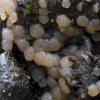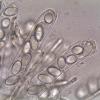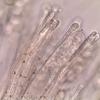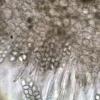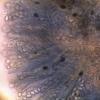
25-11-2025 14:24
Thomas Læssøehttps://svampe.databasen.org/observations/10490522

25-11-2025 11:03
Mick PeerdemanHi all,One of my earliest microscopy attempts, so

24-11-2025 15:23
Arnold BüschlenHallo, auf einer offenen Kiesfläche am Rande ein

23-11-2025 11:16
Bohan JiaHi, I found small discs growing on dead stem of

21-11-2025 10:56
 Christopher Engelhardt
Christopher Engelhardt
Very small (~0,5 mm) white ascos, found yesterday
Coprotus
Bometon Javier,
08-11-2012 21:59

Hola a todos.
Apoteocios sesiles, amarillo anaranjado.
Esporas de 20-22 x 12-14 um, eliposoidale, lisas, hialinas
Ascas, anchas y truncadas, mono o biseriadas, 8 esporas.
Parafisis septadas, apíce engrosado con placas? o gutulas amarillentas
En deposiciones de jabali
Creo que se trata de Coprotus vicinus. Que os parece?
Gracias y saludos
Javier
François Valade,
08-11-2012 22:15

Re : Coprotus
bonjour
Est ce que les asques sont amyloides? (Melzer ou Lugol)
Cette espèce pourrait être Iodophanus carneus.
Les spores du genre Coprotus ont une bulle de de Bary à l'intérieur.
François
Est ce que les asques sont amyloides? (Melzer ou Lugol)
Cette espèce pourrait être Iodophanus carneus.
Les spores du genre Coprotus ont une bulle de de Bary à l'intérieur.
François
Hans-Otto Baral,
08-11-2012 22:21

Re : Coprotus
I agree with Francois. The guttulate paraphyses (VBs) are typical of Iodophanus, but unknown to me in Coprotus. And yes, the whole asci should be amyloid.
DBBs are always absent in water mounts of fresh specimens. They occur only when adding Melzer or other viscous media, or when mounting dry material. So Iodophanus does not produce DBBs?
Zotto
DBBs are always absent in water mounts of fresh specimens. They occur only when adding Melzer or other viscous media, or when mounting dry material. So Iodophanus does not produce DBBs?
Zotto


